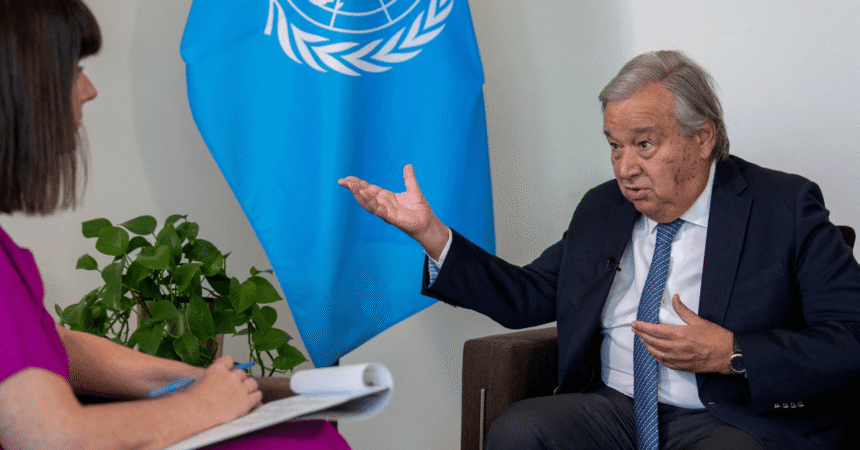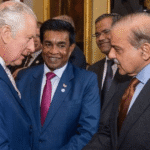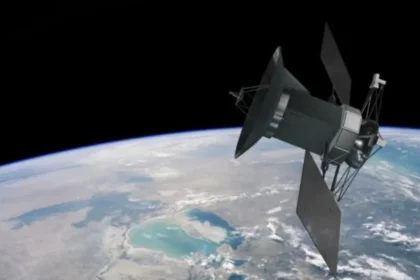In the ever-evolving landscape of global finance, the recent decision by Gulf central banks to cut their key interest rates in alignment with the Federal Reserve (Fed) marks a pivotal moment for the region’s economies. This strategic move reflects the Gulf states’ deep-rooted ties to U.S. monetary policy, particularly as they navigate the challenges of post-pandemic recovery and the imperative to diversify away from oil dependency.
Understanding the Context of the Rate Cuts
The Federal Reserve’s decision to lower its benchmark interest rate by 50 basis points (bps) signifies an attempt to bolster economic growth amid rising inflationary pressures in the U.S. This proactive stance by the Fed often serves as a bellwether for other central banks, especially those in the Gulf region, where most currencies are pegged to the U.S. dollar. The only notable exception is the Kuwaiti dinar, which is pegged to a basket of currencies.
The Direct Impact on Gulf Economies
The Gulf Cooperation Council (GCC) countries—comprising Saudi Arabia, the United Arab Emirates, Qatar, Bahrain, Oman, and Kuwait—have historically aligned their monetary policies with the Fed due to this currency peg. When the Fed reduces rates, Gulf central banks often follow suit to maintain currency stability and economic competitiveness.
For example, after the Fed’s recent announcement, Saudi Arabia reduced its repurchase agreement (repo) and reverse repo rates by 50 bps, bringing them to 5.5% and 5.0%, respectively. The UAE’s central bank also lowered its base rate on the overnight deposit facility to 4.90%. In addition, Qatar and Bahrain enacted similar cuts, while Kuwait adjusted its discount rate to 4% from 4.25%.
The Rationale Behind the Cuts
These rate reductions are not merely reactive but rather strategic decisions aimed at stimulating economic growth in a region that has seen its oil revenues fluctuate dramatically due to global market changes. The Fed’s actions are viewed as a means to create a favorable economic environment, particularly for long-term investment and diversification initiatives that many Gulf states have embarked upon.
Enhancing Investment Opportunities
Lower interest rates can significantly lower borrowing costs for businesses and consumers alike. This environment encourages investments in various sectors, especially in the Gulf, where there is a concerted effort to diversify economies away from their heavy reliance on oil revenues.
Damian Hitchen, CEO of Saxo Bank for the Middle East and North Africa, articulated this perspective well, stating that a Fed rate cut signals a favorable environment for the Gulf’s long-term investment and economic diversification objectives. He noted that investments in sectors such as tourism, renewable energy, and technology become more attractive with lower borrowing costs.
Sectoral Implications of the Rate Cuts
1. Tourism Sector Growth
The tourism sector represents a critical area of focus for many Gulf economies. Countries like Saudi Arabia and the UAE have heavily invested in developing world-class tourism infrastructure to attract international visitors.
For instance, Saudi Arabia’s Vision 2030 includes ambitious plans to boost tourism by creating new attractions, enhancing cultural experiences, and making travel more accessible. Lower interest rates will facilitate financing for large-scale projects, enabling rapid advancements in this sector. The UAE, known for its luxury tourism and hospitality, is similarly poised to benefit from increased investment, allowing it to diversify its tourism offerings and draw a broader range of visitors.
2. Renewable Energy Initiatives
As the world moves towards sustainability, the Gulf states are increasingly recognizing the importance of renewable energy. The region is rich in solar potential, and lower interest rates can make financing for solar projects more viable.
Countries like the UAE have already made significant strides in solar energy, exemplified by projects like the Mohammed bin Rashid Al Maktoum Solar Park in Dubai. Saudi Arabia is also making substantial investments in renewable energy as part of its Vision 2030 initiative. With the recent rate cuts, financing for these initiatives becomes more accessible, promoting long-term energy sustainability.
3. Technological Advancement
The technological sector in the Gulf is burgeoning, with several countries investing in innovation hubs and tech startups. Lower borrowing costs enable entrepreneurs to access capital more easily, fostering a culture of innovation and entrepreneurship.
For example, the UAE has established numerous free zones aimed at attracting tech companies and startups, offering tax incentives and reduced regulatory barriers. The recent interest rate cuts create an environment that is conducive to further investments in technology, positioning the Gulf as a growing player in the global tech landscape.
Broader Economic Implications
While the decision to cut interest rates is primarily aimed at stimulating investment, it also has broader implications for economic stability in the region.
Inflation Control
Interestingly, despite the Fed’s concerns about rising inflation in the U.S., the Gulf region has largely managed to keep inflation rates in check. According to a Reuters poll, inflation in the GCC is expected to average between 1.0% and 3.0% in 2024, suggesting a relatively stable economic environment compared to many other regions.
Several factors contribute to this stability:
- Subsidies and Price Controls: Many Gulf governments maintain price controls and subsidies on essential goods, which help to mitigate inflationary pressures.
- Stable Currency Pegs: The peg to the U.S. dollar provides a stabilizing effect on exchange rates, further contributing to controlled inflation levels.
- Robust Government Spending: Significant government investments in infrastructure and social programs have helped maintain economic stability, offering a buffer against inflation.
The Need for Cautious Optimism
While the outlook appears positive, it is essential to approach these developments with cautious optimism. Global economic uncertainties—such as geopolitical tensions, supply chain disruptions, and fluctuating oil prices—could pose risks to the Gulf’s recovery trajectory.
Overreliance on Oil Revenue
Despite efforts to diversify, many Gulf economies still depend heavily on oil revenues. This reliance makes them vulnerable to fluctuations in global oil prices. In the event of a significant drop in prices, governments may find their revenues severely impacted, potentially jeopardizing diversification efforts.
Labor Market Challenges
As Gulf countries pivot towards a more diversified economy, they face challenges in their labor markets. The reliance on foreign labor presents obstacles, particularly as they seek to develop local talent in sectors such as technology and renewable energy.
To address this, investments in education and vocational training are crucial. Governments must ensure that their workforce is equipped with the skills necessary for the future job market.
The Path Forward
The recent interest rate cuts by Gulf central banks represent a strategic move to foster economic growth and diversification. By aligning with the Fed’s policy, these nations can create a conducive environment for investment in non-oil sectors, which is essential for long-term sustainability.
The Role of Government Initiatives
Government initiatives will play a critical role in this transition. For instance, public-private partnerships can be leveraged to drive investment in sectors like tourism and renewable energy. By creating frameworks that encourage private sector involvement, Gulf states can enhance their economic diversification efforts.
Emphasizing Regional Cooperation
Collaboration among Gulf states is also vital. By sharing best practices, resources, and expertise, these nations can strengthen their collective ability to navigate economic challenges. Initiatives like the GCC Digital Economy Strategy highlight the importance of regional cooperation in fostering innovation and economic resilience.
Monitoring Global Trends
Finally, staying attuned to global economic trends is crucial. As the world economy continues to evolve, Gulf nations must remain flexible and responsive to changes in the international landscape. This adaptability will be key to successfully implementing their diversification strategies.
Conclusion
The decision by Gulf central banks to cut interest rates in response to the Federal Reserve marks a significant moment in the region’s economic evolution. As Gulf economies strive to diversify away from oil dependence, this environment of lower borrowing costs presents a unique opportunity to foster growth in sectors such as tourism, renewable energy, and technology.
While the path forward is promising, it is accompanied by challenges that require strategic planning and collaboration. By investing in local talent, embracing innovation, and fostering regional cooperation, Gulf states can build a resilient and diversified economy that can withstand future shocks.
In this new chapter, the Gulf region stands at a crossroads, equipped with the tools to redefine its economic future in a post-oil world. As these nations embark on this journey, the eyes of the global community will undoubtedly be watching closely.
#GulfEconomy #InterestRates #EconomicDiversification #Investment #Tourism #RenewableEnergy #Technology #FedRateCut #MiddleEast #OilDependence #EconomicStability #GlobalFinance #GCC #Sustainability #Innovation







